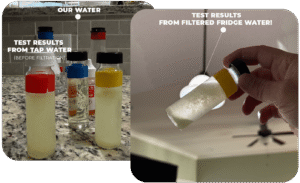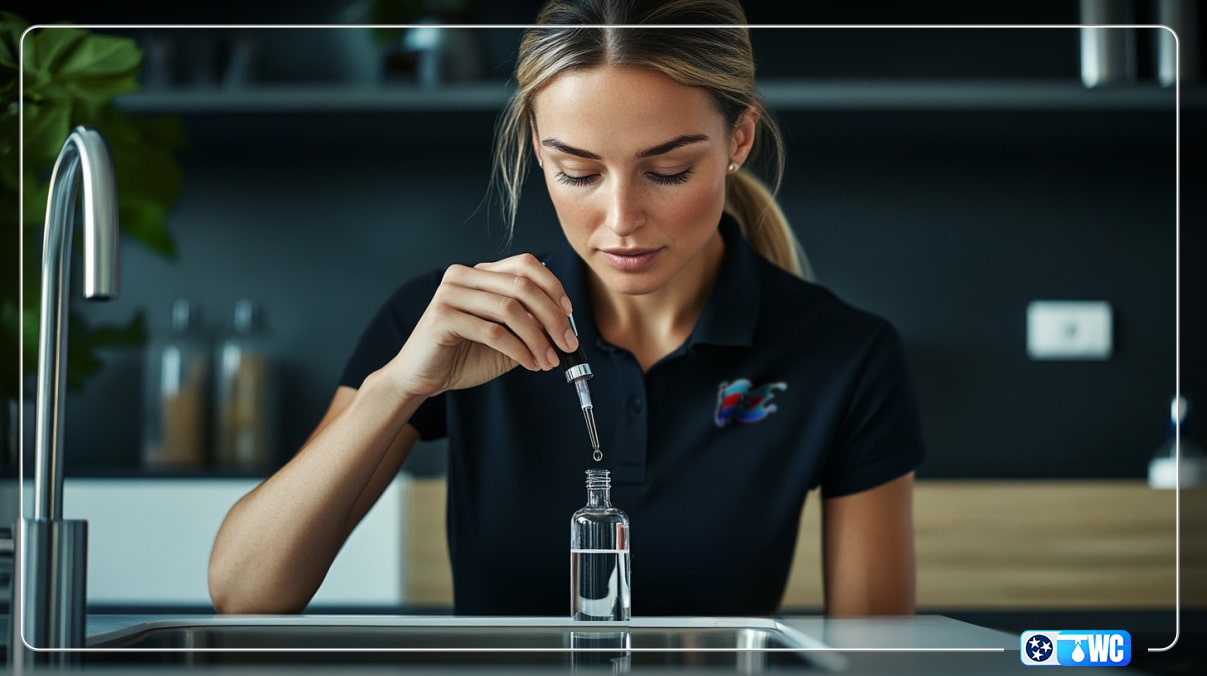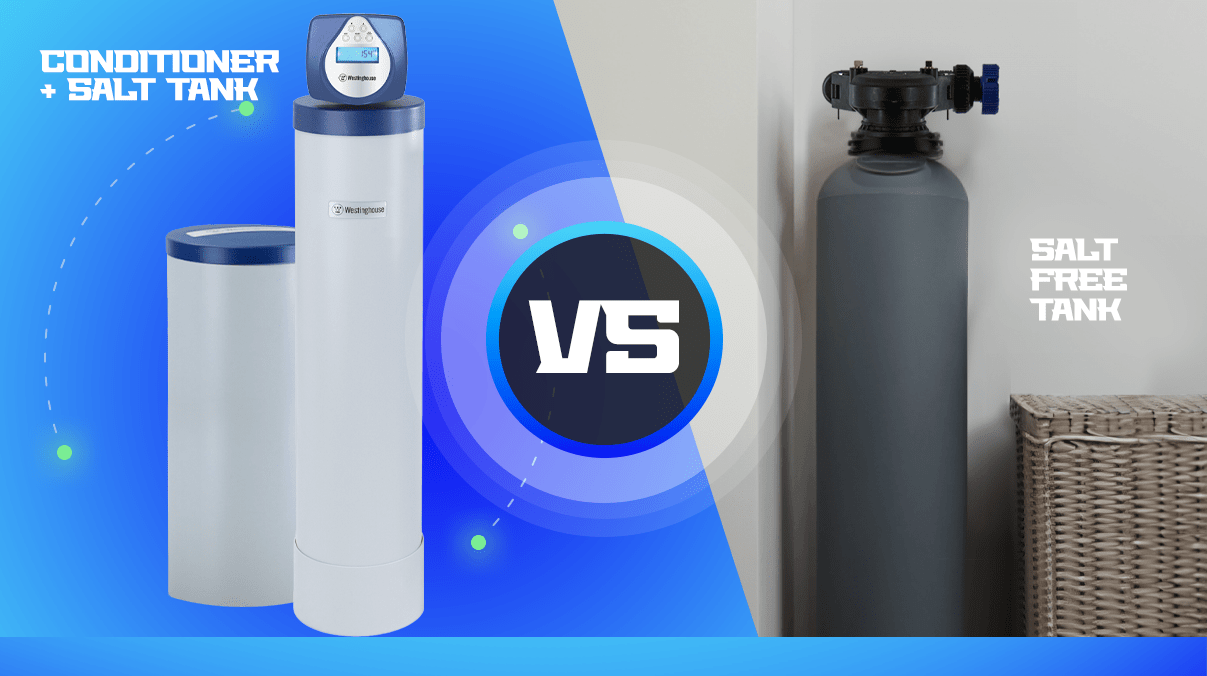At Tennessee Water Company, we believe every homeowner deserves to know what’s flowing through their taps. Is your water as clean and safe as it seems? We offer a free in-home water test that identifies hardness, chlorine, and other contaminants to help you make informed decisions about your water quality.
Here’s how our testing process works, broken down step by step:
Step 1: Hardness Test – Is Your Water Carrying Rock?
Hard water is a silent troublemaker. It carries dissolved minerals like calcium and magnesium, which can cause:
• Scale buildup in pipes and appliances.
• Shortened lifespans for water heaters, washing machines, and dishwashers.
• Dry, irritated skin and dull hair after showers.
We start by testing your water’s hardness. This involves two vials—one filled with tap water and one with water from a miniature water conditioner. Here’s what we do:
1. Buffering Agent: We add a few drops of a buffering agent to your tap water. This adjusts the pH so we can get an accurate reading.
2. Indicator Dye: Next, we add a dye that turns red if the water is hard and blue if it’s soft.
3. Grains Per Gallon Measurement: To determine how hard your water is, we add drops of a softener solution. Each drop represents 1 grain per gallon of hardness. For example, if it takes 15 drops to change the red vial to blue, your water has 15 grains of hardness—a level classified as “very hard” by the Water Quality Association (WQA).
To put this in perspective, the EPA reports that the average U.S. household uses about 300 gallons of water per day. With 15 grains of hardness, you’re pumping 234 pounds of rock-like minerals into your home every year!
Step 2: Chlorine Test – Is Your Water Too Harsh?
Chlorine plays a crucial role in disinfecting water, but once it reaches your home, it’s more of a foe than a friend. Excessive chlorine can:
• Corrode plumbing and appliances.
• Dry out skin and hair.
• Cause unpleasant tastes and odors in your water.
We test your water for chlorine levels using a solution called OTO (orthotolidine). After adding a few drops to a vial of your tap water, the solution changes color. If it turns yellow, chlorine is present. The darker the yellow, the higher the chlorine concentration.
The chlorine level in your tap water might match what’s considered safe for a swimming pool. While that’s great for killing bacteria, it’s not ideal for daily consumption or showering. Studies show that inhaling chlorine vapors during showers can irritate the respiratory system and contribute to long-term health issues (U.S. National Library of Medicine).
Step 3: Visual Contaminant Test – What’s Lurking in Your Water?
Finally, we perform a test to give you a visual comparison of your tap water versus conditioned water. By adding specific reagents to each sample, you can see firsthand:
• The buildup caused by hard minerals.
• Cloudiness or discoloration indicating other contaminants.
Seeing is believing. This side-by-side comparison helps homeowners understand exactly what’s in their water and how it could be impacting their home and family.

What Do the Results Mean?
After completing these tests, we explain how your water quality stacks up:
• Hardness: Is your water soft, moderately hard, or very hard? We’ll show you where you fall on the WQA’s scale.
• Chlorine: Are your levels within acceptable ranges, or is your water as harsh as pool water?
• Contaminants: What are you showering in, drinking, and cooking with?
Most importantly, we’ll discuss how these issues could be affecting your plumbing, appliances, and health—and how they can be addressed.
Why Water Quality Matters
Water is something we use every day, yet many homeowners never think about what’s really in it. Hard water can cost you hundreds of dollars a year in repairs and replacements for damaged appliances. Chlorine exposure can lead to dry skin, respiratory irritation, and unpleasant tastes. And that’s just scratching the surface of potential contaminants.
Addressing water quality isn’t just about fixing problems—it’s about improving your quality of life.
Take the First Step with a Free Water Test
If you’re curious about your water quality or concerned about the impact it’s having on your home and family, Tennessee Water Company is here to help. Our free in-home water test gives you the answers you need to make informed decisions about your water.
Schedule your free test today and discover how cleaner, safer water can transform your home. Click here to book your appointment!



